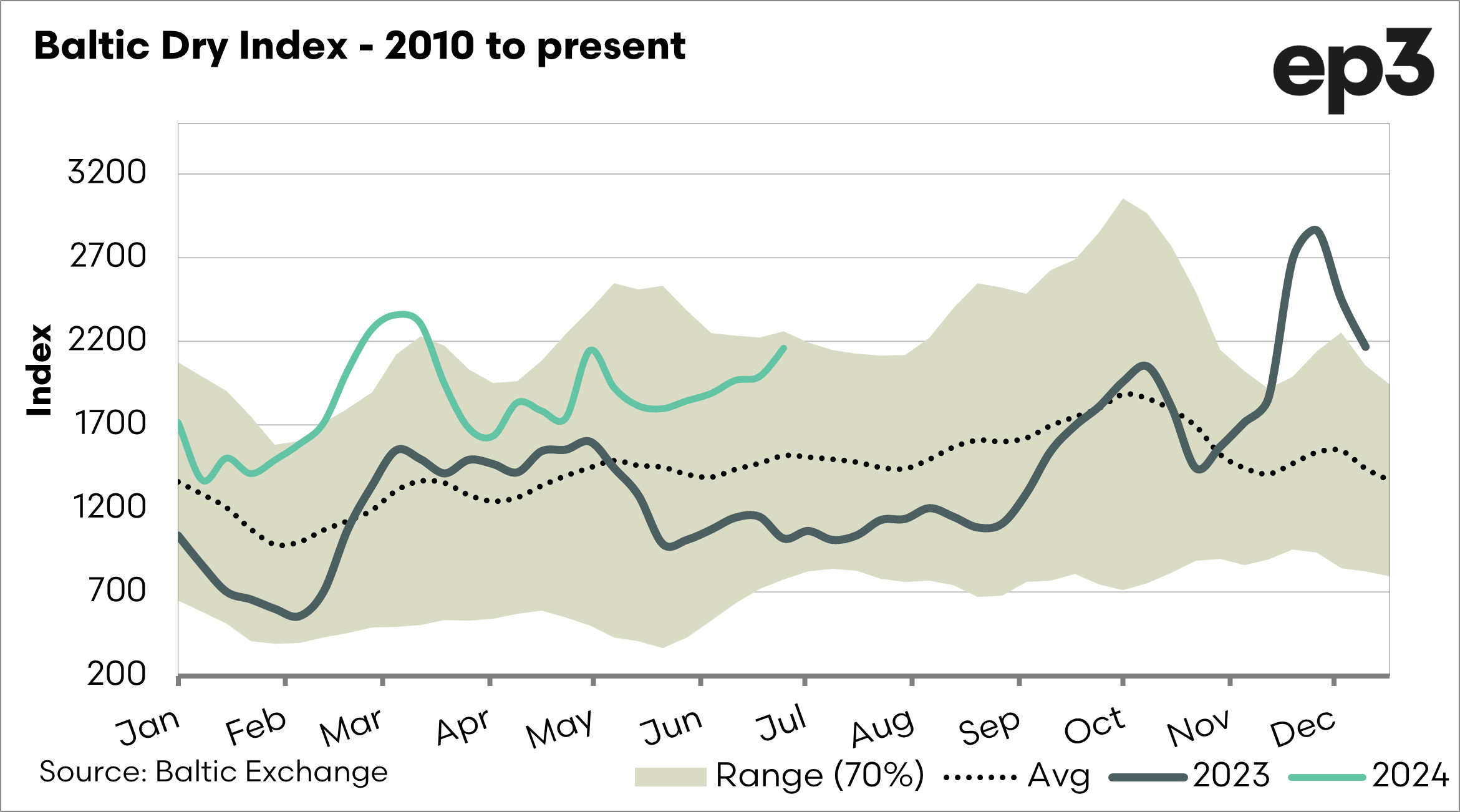The costs of freight adding up

Freight
We are beholden to overseas trade. Most of our agricultural produce will head to overseas customers. At EP3 we always keep a close eye on freight markets, and take these into account when we are analysing markets.
The cost of freight, therefore, has a huge impact on the industry. So a quick update on that topic.
Bulk
The dry bulk market is significant as it is fundamental to our exports of grains and our imports of fertilizer. The Baltic Dry Index (BDI) is an important indicator of bulk freight rates. The BDI has been stronger throughout 2024.
As freight rates increase in price, geographic advantages tend to be more critical. This is useful for Australians in South East Asia.
The second chart below shows a rebased BDI and Iron Ore index from 2013 to the present. This shows the relationship between Iron ore and the BDI. The trends of the two tend to move with one another quite closely.
This is important as the BDI (and potentially ore) has a secondary role as a lead economic indicator. A higher BDI is considered by many to be a proxy for global growth, as bulk carriers transport the underlying commodities required for the production of, well, everything.
My biggest wonder at present is whether this is an indicator of global growth or a portent of higher inflation.
Containers
Containers operate in a completely different market to bulk and should always be treated separately.
The first chart below shows an index of bulk vs container pricing from 2001 to the present; both indexes have been rebased to Jan 01 (100). Containers follow some of the trend movements of bulk. When global growth increases, then containers rise due to demand.
The second chart below shows containers’ cost from 2020 to the present. This year, the cost of container freight increased strongly. Partly, this was due to the Houthi red sea attacks. We are still a long way from the recent highs caused during the height of the COVID pandemic, but it is a worrying trend at a time of high inflation.
All products moved by containers are facing higher costs, the biggest being pulses, fibres and meat. We could be into a period of higher costs again, if these price rises continue to increase.








